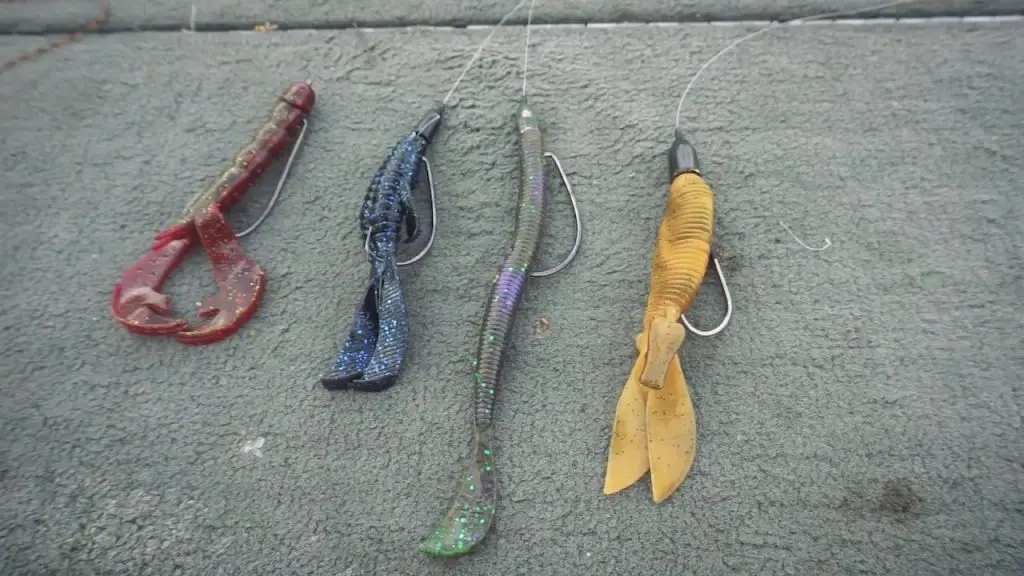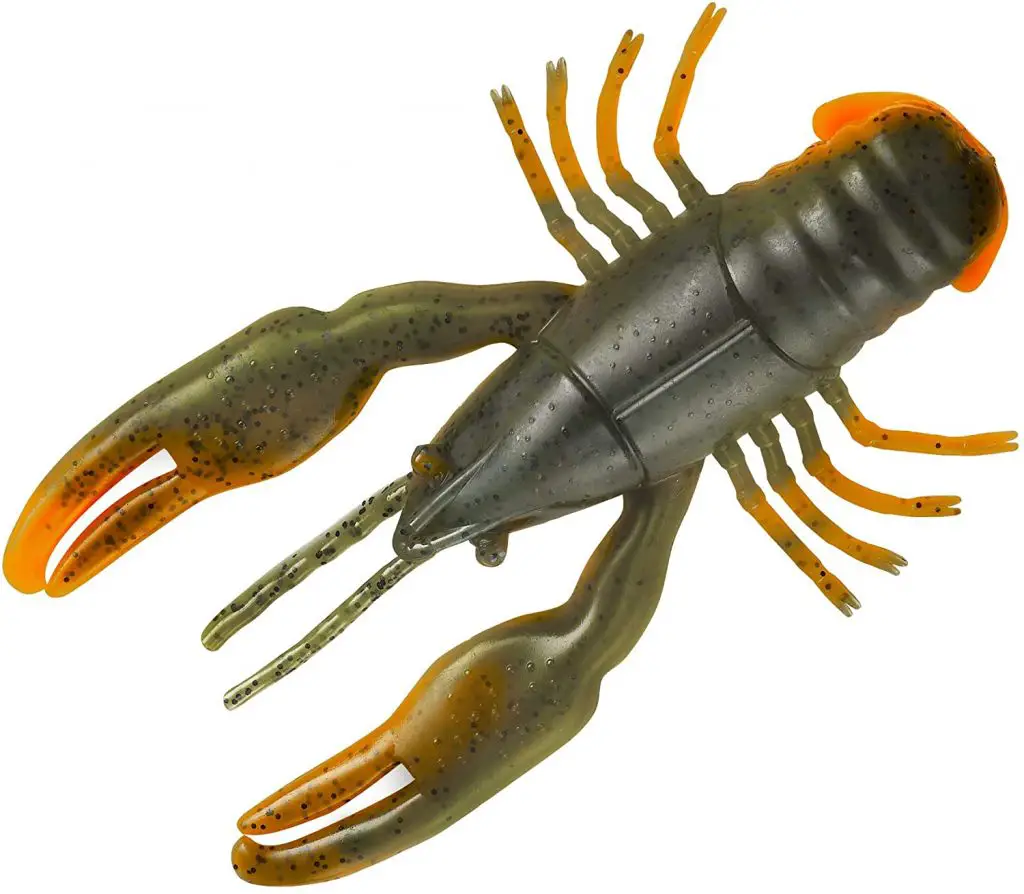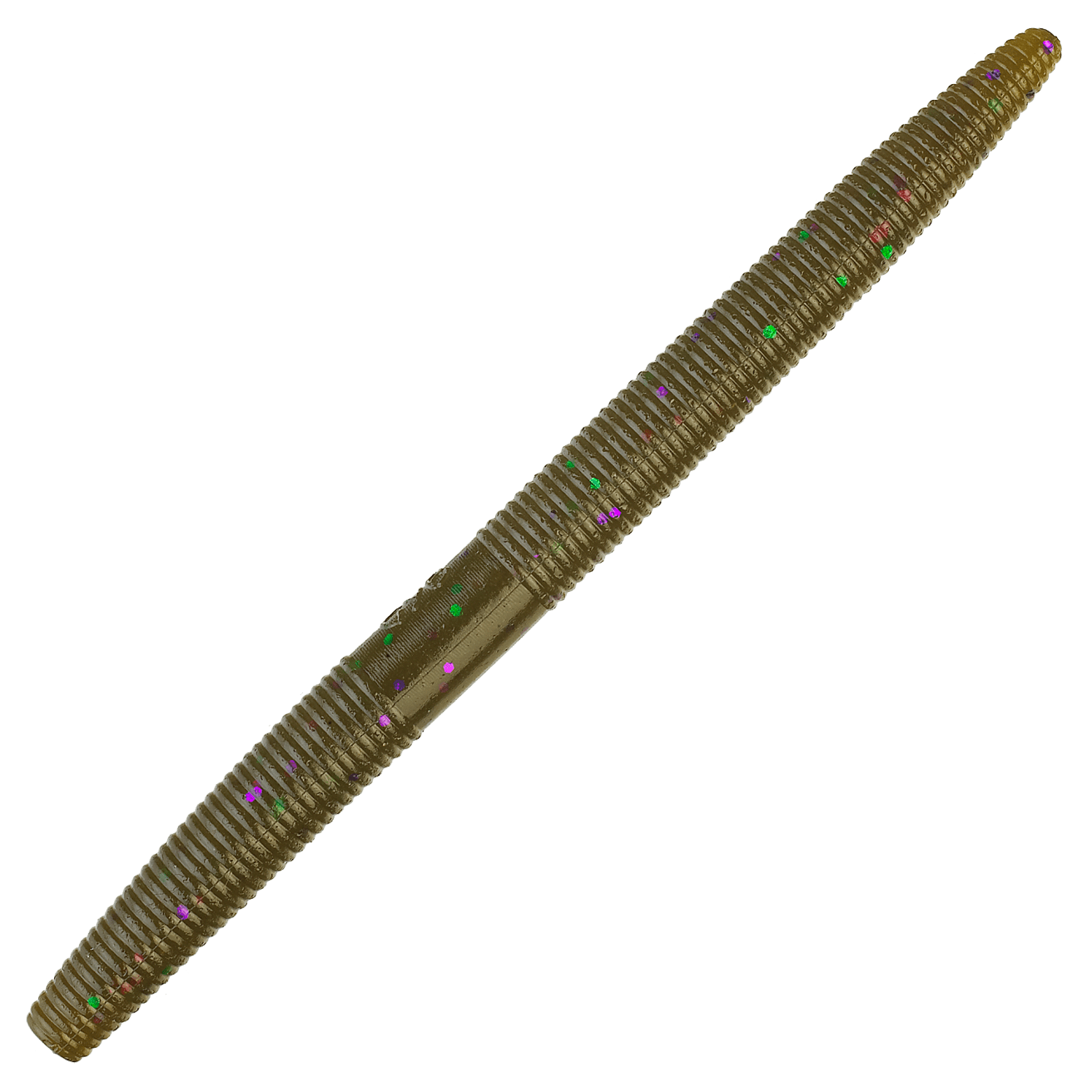To fish for bass with soft plastic lures, choose an appropriate lure type, rig it using a suitable technique (e.g., Texas, Carolina, or drop shot), cast near cover or structure, and retrieve with various movements (like slow dragging, twitching, or hopping) to mimic natural prey and entice bass to strike.
There’s no bait quite like soft plastics when it comes to bass fishing. There are hundreds of styles, colors, lengths and other varieties that anglers can use to take advantage of a particular environment or condition when the bass are biting. However, it’s understandable that beginner anglers can become confused when faced with the huge assortment of soft plastic baits as there are seemingly endless ways to fish them.
If you’re a novice angler or one who’s just looking for a handy guide to bass fishing with soft plastics, we’ve compiled this article to help you navigate your way through one of bass fishing’s most versatile and effective baits.
This article is part of my Complete Guide to Bass Fishing series that you might be interested in.
Table of Contents
Types of Soft Plastics
Soft plastic baits are made of a combination of salt, plastic, glitter and other components that’s formed in a shape which is supposed to resemble a creature that bass perceive as prey. There are roughly 10 different types of these soft plastic baits that are made specifically for bass fishing.
In the following sections, we’ll try to explain how to use each type of soft plastic baits, as well as when and where they are typically most effective. While we could go into much greater detail on each section, we’ll keep the explanation brief in order to provide a solid overview that should serve as a good bass fishing with soft plastics guide.
Worms
The undisputed king of soft plastic baits is, by far, the worm. There are hundreds, if not thousands, of variations of soft plastic worms that are produced by different lure and bait manufacturers in the fishing industry. They are very easy and simple to rig and use for most anglers.
Worms can be used at virtually any time of the year to catch bass in a variety of conditions if they are used properly. Some of the most common varieties of soft plastic worms include curly tails, stick worms, paddle tails, ribbon tails, finesse worms, straight tail, ned worm and others.
Many novice anglers might think these worms are designed to resemble actual worms, but in most cases, they are created to look like small bait fish. Soft plastic worms are usually able to resemble bait fish as their body is capable of wiggling in a way that looks like the bait is ‘swimming’ and the tail also has action that’s similar to what fish usually see when they are watching a small bait fish working its way along the bottom.
Worms have a narrow body and are typically fished weedless and with a weight, which makes them perfect for fishing around thick cover or vegetation without getting snagged. Before you learn how to fish with any other type of soft plastic bait, we highly recommend that you master fishing with worms.

Tubes
Another popular and very simple-to-use kind of soft plastic is the tube bait. These strange-looking lures are often misunderstood and overlooked by beginners, but expert anglers know just how potent they are when it comes to bass fishing. It’s a unique type of soft plastic that is capable of mimicking small bait fish, as well as crawfish.
At first glance, a tube bait might appear to be a strange, squid-looking lure that you probably wouldn’t use to catch largemouth bass with. However, it has all the right characteristics to attract bass in different conditions if you know how to use it the right way.
Most anglers will rig the tube Texas-style with a bullet sinker and an offset shank hook, which makes it a very compact lure that you can cast into really tight windows and pull bass out of heavy cover. Another popular way to fish a tube bait is to insert a jig head up into the tube and leave the hook exposed.
Creature Baits
Another peculiar type of soft plastic bait used for bass fishing is known as the creature bait. This term is actually used to describe a number of different variations or styles, much like the same way there are many different kinds of plastic ‘worms.’ Creature baits consist of a slender, worm-like body that has multiple appendages attached to it that make it look like anything from a lizard to a salamander and everything in between.
When fishing with these creature baits in murky water around thick cover, these appendages might appear to be moving fins to any nearby bass that’s checking the lure out. When fishing in clear water, the same appendages probably look more like the legs and arms of a small creature that bass will perceive to be an easy meal.
Most professional anglers that use creature baits will rig them in a Carolina or Texas style depending on whether they’re fishing around heavy cover or depth changes. There have even been times when I’ve had a creature bait bitten in half and rigged the remaining half Texas-style to continue catching fish when the bite is on.

Beaver Baits
Beaver baits are sometimes referred to as “brush hogs” or other terms by anglers, but they all refer to a compact, thick soft plastic bait that has mutlple appendages attached. These soft plastics, unlike creature baits, are made to resemeble crawfish in most cases. Beaver baits have ribbed, oval-shaped bodies that are thicker and heavier than most other kinds of soft plastics.
The heavier, more compact nature of beaver baits allow them to serve as the perfect option for fishing in very thick, heavy cover where bass like to hide out. They are usually fished in a Texas-style rigging that makes them easy to pitch or flip under docks and into tight windows.
Beaver baits are one of the best soft plastics used for fishing around heavy cover or very thick vegetation where other kinds of baits simply can’t be used. They have a distinct darting motion when used properly and beaver baits are capable of gliding through sections of water where you might think nothing would make it through without getting snagged.
Soft Jerkbaits
Soft jerkbaits are a must-have item for any serious angler who wants to take advantage of those days when bass are schooled up or hanging out near ledges and drop offs waiting for unsuspecting bait fish to wander by. Most anglers refer to soft jerkbaits as flukes, shad tails, or other terms, but these are all basically describing the same kind of soft plastic bait.
Some of the newer kinds of soft jerkbaits are made with more realistic characteristics such as 3D eyes, fins, and more intricate color patterns. However, the old-school style of soft jerkbaits are just as capable of catching monster-sized bass as any of the newer ones that are marketed as being more effective.
The soft jerkbait is a plastic lure that I like to use when I have a good idea of where the fish are schooled-up at, which is typically close to the shoreline. When rigged with a 5/0 or 6/0 offset shank hook, you can create a lure presentation that’s totally weedless and weightless, yet capable of drawing strikes from big bass with just a few twitches of your rod tip.
Craws
In recent years, some of the top lure manufacturers in the fishing industry have made significnt strides when it comes to producing highly-realistic crawfish baits that are commonly known as ‘craws’ to most anglers. Years ago, these kinds of soft plastic baits were much less detailed and were basically made in the same way trailer baits were, but brands are now desigingin craws with greater detail and intricate designs that look just like the real thing underwater.
Crawfish are among the most favorite menu items for largemouth and smallmouth bass and serious anglers know that you can get a lot more bites by trying to mimic a crawfish when other fishermen might be trying to mimic a bait fish. These come in a huge variety of different colors and sizes, but the most effective versions will largely depend on the types of crawfish species that are native to the particular body of water you’re fishing in.
These types of soft plastic baits are usually best used by Texas-rigging them if you’re fishing in and around heavy cover. Some anglers have reported that the Carolina rig is often the best possible method for fishing with the craw as it is effective for getting the attention of bass that are used to seeing them in a Texas rig.

Stickbait
Stickbait soft plastics are somewhat similar to worms, but have a more rigid body that allows them to be fished in a totally different presentation manner to get bites when bass are tight-lipped. Stickbaits are also sometimes referred to as stickworms, but they also come in a wide number of different styles, sizes, and appearances that make them a must-have item for any serious angler who wants to leverage the weightless-style rigging of soft plastics.
Anglers like to use stickbait plastics in everything from Carolina rigs to shaky heads as their design gives you a completely new way to fish rigs that you normally use a plastic worm for. The fact that their bodies are more rigid and less likely to bend make them perfect for Ned rigs and Neko rigs.
I like to use the stickbait in a Wacky style, especially on days when bass are more lethargic or taking refuge in heavy cover. The stickbait’s body makes it easy to get the perfect type of action just by twitching the rod tip a bit as the stickworm is falling to the bottom.
Toads
When it comes to having a soft plastic bait that’s capable of punching through thick vegetation or remaining on top of the water if you want, the toad is unmatched when compared to other soft plastics. This type of soft plastic bait was first introduced decades ago and became incredibly popular with anglers who liked to use it to ‘buzz’ the lure across the surface when the topwater bite was on fire.
Today, the soft plastic toad remains a solid option for fishing in this same buzz style, or if you want to go with a Texas-rig and offset shank hook to allow you to punch into thick vegetation or fish in and around brush piles near the shoreline during the early morning.
These kinds of soft plastics work exceptionally well in any area where you will naturally find frogs living as bass will be on the lookout for any frog they can pick off and make an easy meal out of. I like to use these around the banks of lakes that have grass growing during the summer and early fall each year.
Drop Shots
Up until just a few years ago, most anglers used a variety of different soft plastic baits with a drop shot rig. Depending on the depth they were fishing in, they would typically use shorter worms or even flukes to mimic a small bait fish near the bottom. Now, brands have started producing a new, specially-designed soft plastics that are intended to be fished with a drop shot rig.
These kinds of soft plastics usually have a short, wide body that tapers down and appears to have a small tail on the other end. These are just as capable of attracting bites from deepwater bass when other anglers might opt for a paddletail or standard fluke soft plastic.
Some brands produce a very detailed minnow-like plastic lure that’s intended to be fished in a drop shot rig. These are more effective for situations when the water is clear and fish are capable of using their sense of sight to detect prey.
Trailers
Last, but certianly not least, among the lures listed in our bass fishing with soft plastics guide is the trailer. These are all-too-often overlooked by novice anglers for one reason or another, but the truth is that they can greatly enhance the presentation of a wide range of lures and help you attract more bites.
Soft plastic trailers come in all kinds of shapes and sizes and are typically used with spinnerbaits, jigs, swim jigs, and other types of lures. Depending on the type of lure you want to use them with, soft plastic trailers are able to produce more vibration or flapping motions that will grab a bass’ attention better than the standard lure you’re using it with.
I often like to use a trailer that matches the lure color when I’m fishing in clear water, but I’ve also had success by using a trailer with a color that directly contrasts my main lure when fishing in muddy water with low visibility.

